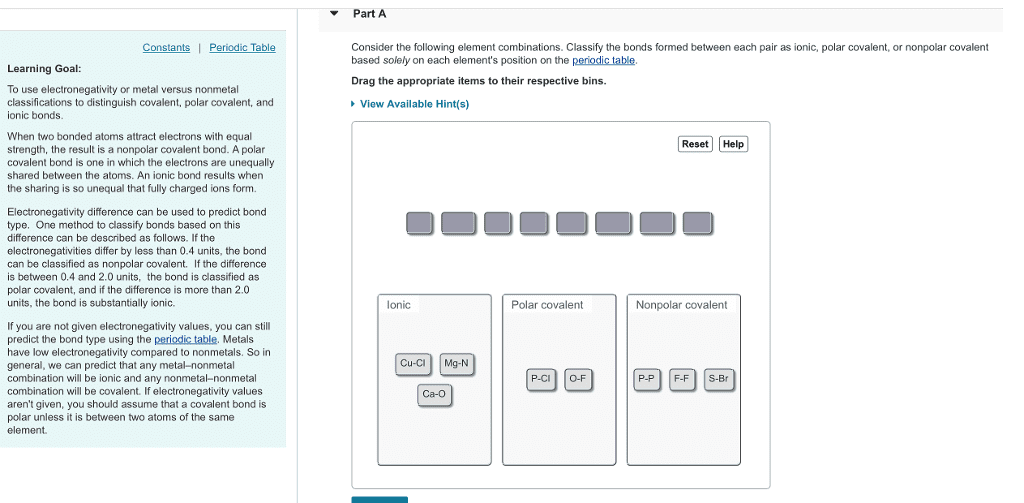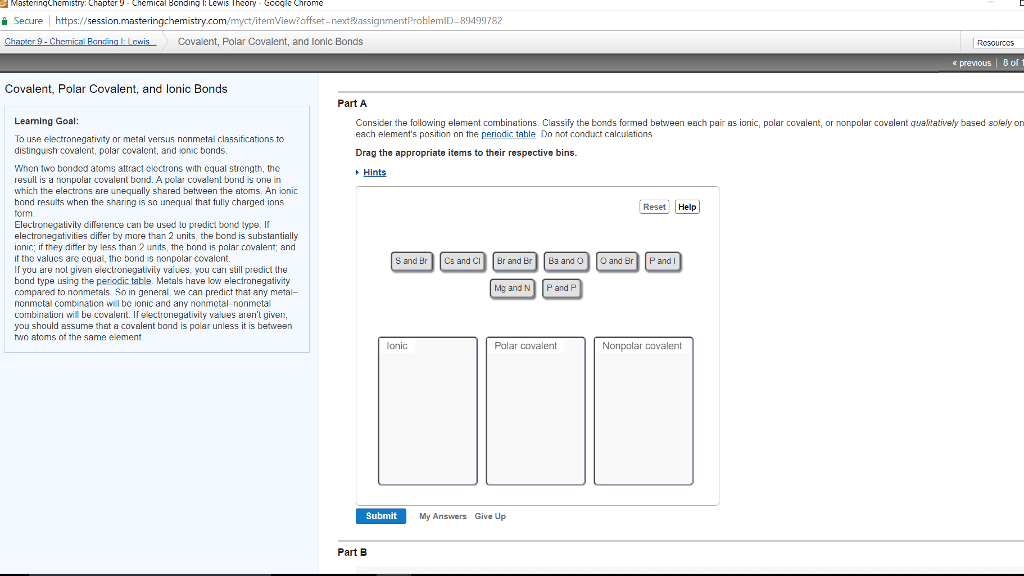CHEM 104 Study Guide - Final Guide: Electrochemical Cell, Nernst Equation, Enantiomer

Chem 104 – Spring 2018
Final Exam Study Guide
Materials from Midterm 1
I. Electronegativity (EN)
a. Degree to which an atom can attract an e- in a bond
b. Trend
F
II. Types of Bonds
a. Nonpolar Covalent: equal sharing of e- between 2 identical nonmetals
i. Electronegativity difference is 0
b. Polar Covalent: unequal sharing of e- between 2 nonmetals
III. Bond Polarity
a. ∆EN ↑ = bond polarity ↑
b. Polar Bond: A bond in which e- are pulled to one side of the molecule with
a slight pos charge on one side and a slight neg charge on the other side
IV. Lewis Dot Structure
a. Count valence electrons
b. Draw skeleton structure
c. Build octets
d. Check # of e-
i. If equal, no change
ii. If too many, add multiple bonds
iii. If not enough, add e- pairs to central atom
V. Bond Order
a. Bond Order ↑ = bond strength ↑ = bond length ↓
b. Bond Orderresonance = # 𝒃𝒐𝒏𝒅𝒔
# 𝒐𝒇 𝒍𝒐𝒄𝒂𝒕𝒊𝒐𝒏𝒔 𝒃𝒐𝒏𝒅𝒔 𝒂𝒓𝒆 𝒅𝒊𝒔𝒕𝒓𝒊𝒃𝒖𝒕𝒆𝒅

c. Resonance and Resonance Structures
VI. VSEPR (Valence Shell Electron Pair Repulsion)
Tot
al
A+
B
#ato
ms
bond
ed to
centr
al
atom
#lone
pairs
on
centr
al
atom
Electron
Region
Geometr
y
Pictu
re
Molecula
r
Geometr
y
Pictu
re
Angl
es
Examp
les
Pol
ar
Hybri
d-
izatio
n
Orde
r
2
2
0
Linear
Linear
180°
BeCl2
NP
*
sp
3
3
0
Trigonal
Planar
Trigonal
Planar
120°
BF3
NP
*
sp2
2
1
Trigonal
Planar
Bent
115°
or
<120°
AIF2-
P
sp2
4
4
0
Tetrahed
ral
Tetrahed
ral
109.5
°
CH4
NP
*
sp3
3
1
Tetrahed
ral
Triangul
ar
Pyramid
al
107.5
° or
<109.
5°
NH3
P
sp3
2
2
Tetrahed
ral
Bent
104.5
° or
<109.
5°
H2O
P
sp3
∗ = Assuming the molecule is around the central atom is identical
VII. Hybridization
a. Sigma (𝛔) Bond
b. Pi (𝛑) Bond
c. Single Bond = 𝛔 bond
d. Double Bond = 𝛔 bond + 𝛑 bond
e. Triple Bond = 𝛔 bond + 2𝛑 bond
VIII. Intermolecular Forces
a. H-Bonding
i. H bonded to N, O, or F
b. Dipole-Dipole
i. Polar molecules
ii. Nonpolar molecules: (hydrocarbons, CxHy)
c. London Dispersion Forces/ Induced Dipole
i. Occurs in all molecules and individual atoms
IX. Drawing Molecules
a. Molecular Formula
b. Lewis Structure
c. Condensed Structure
d. Dash-Wedge
e. Line Notation
f. Variation (Condensed Structure with bonds drawn)
X. Naming Molecules
XI. Functional Groups
a. Hydrocarbon (H-C) Functional Group
i. Hydrocarbons: only hydrogen and carbon
a. Nonpolar
b. C1-C4 = gas, C5-C17 = liquids, C18+ = solids
1. Alkanes
a. Only C-C single bonds
b. Formula: CnH2n+2
c. Suffix: -ane
2. Alkenes
a. At least one C-C double bond
b. Formula: CnH2n
c. Suffix: -ene
Document Summary
Materials from midterm 1: electronegativity (en, degree to which an atom can attract an e- in a bond, trend. Bond polarity: en (cid:1371) = bond polarity (cid:1371) #ato ms bond ed to centr al atom. = assuming the molecule is around the central atom is identical. 5 : sigma () bond, pi () bond, single bond = bond, double bond = bond + bond, triple bond = bond + 2 bond, h-bonding. Intermolecular forces: h bonded to n, o, or f, dipole-dipole, polar molecules, nonpolar molecules: (hydrocarbons, cxhy, london dispersion forces/ induced dipole, occurs in all molecules and individual atoms. Drawing molecules: molecular formula, lewis structure, condensed structure, dash-wedge, line notation, variation (condensed structure with bonds drawn, naming molecules. Factors that affect rate: concentration, temperature, catalyst, particle size. Different methods to determine rate law: initial rates method, description, graphs - integrated rate laws. Rate law y-axis vs x- axis (y=mx+b) slop e y- t1/2.


